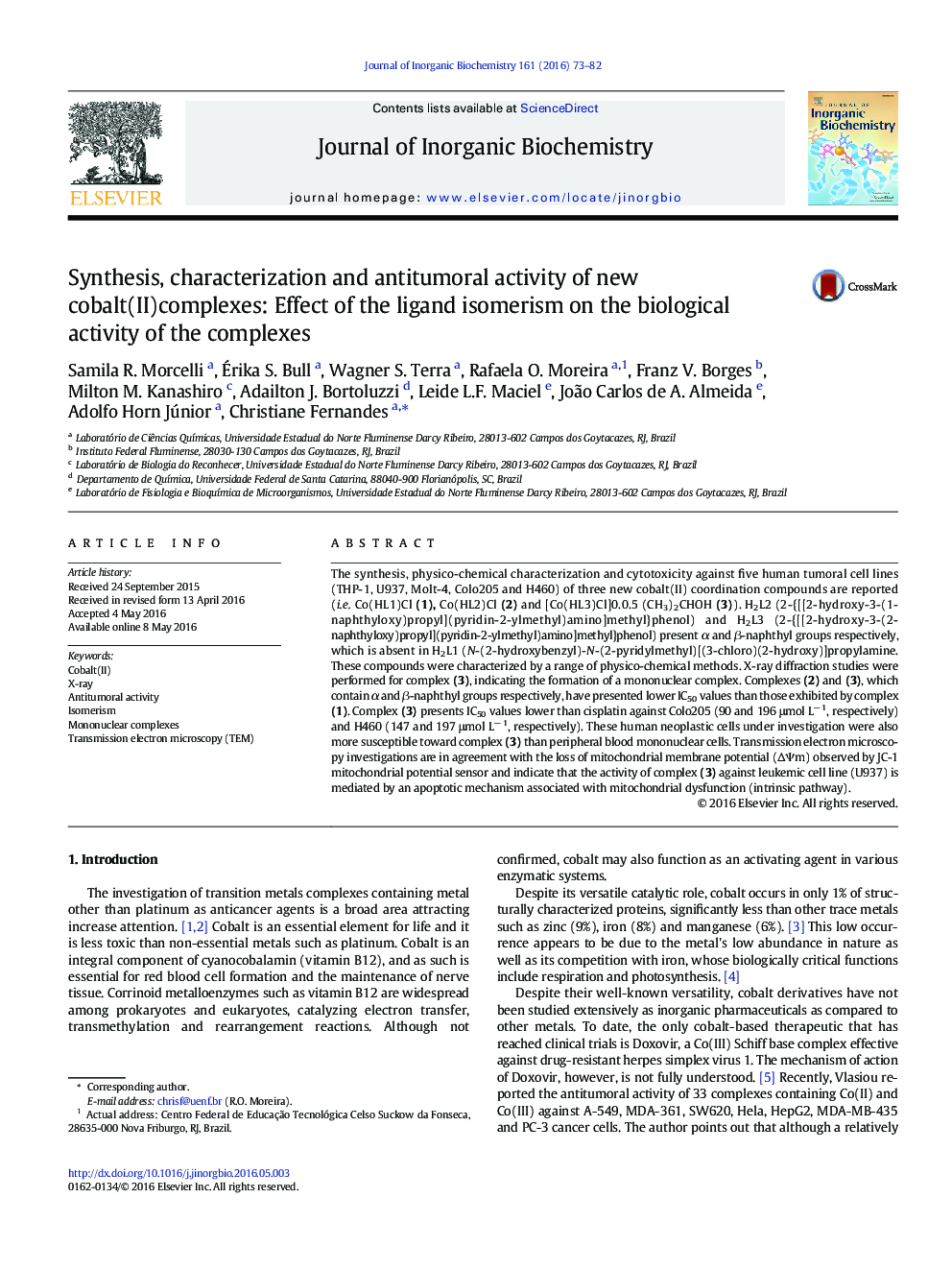| Article ID | Journal | Published Year | Pages | File Type |
|---|---|---|---|---|
| 1315805 | Journal of Inorganic Biochemistry | 2016 | 10 Pages |
•New cobalt(II) complexes containing naphthyl groups (alpha and beta)•X-ray diffraction studies and investigations in solution were performed (UV–vis and ESI(+)-MS).•The naphthyl group is related to the better activity of complexes (2) and (3).•Complex (3) exhibits higher activity than cisplatin against Colo205 and H460.•5-The apoptosis signal triggered by complex (3) starts from an intrinsic pathway.
The synthesis, physico-chemical characterization and cytotoxicity against five human tumoral cell lines (THP-1, U937, Molt-4, Colo205 and H460) of three new cobalt(II) coordination compounds are reported (i.e. Co(HL1)Cl (1), Co(HL2)Cl (2) and [Co(HL3)Cl]0.0.5 (CH3)2CHOH (3)). H2L2 (2-{[[2-hydroxy-3-(1-naphthyloxy)propyl](pyridin-2-ylmethyl)amino]methyl}phenol) and H2L3 (2-{[[2-hydroxy-3-(2-naphthyloxy)propyl](pyridin-2-ylmethyl)amino]methyl}phenol) present α and β-naphthyl groups respectively, which is absent in H2L1 (N-(2-hydroxybenzyl)-N-(2-pyridylmethyl)[(3-chloro)(2-hydroxy)]propylamine. These compounds were characterized by a range of physico-chemical methods. X-ray diffraction studies were performed for complex (3), indicating the formation of a mononuclear complex. Complexes (2) and (3), which contain α and β-naphthyl groups respectively, have presented lower IC50 values than those exhibited by complex (1). Complex (3) presents IC50 values lower than cisplatin against Colo205 (90 and 196 μmol L− 1, respectively) and H460 (147 and 197 μmol L− 1, respectively). These human neoplastic cells under investigation were also more susceptible toward complex (3) than peripheral blood mononuclear cells. Transmission electron microscopy investigations are in agreement with the loss of mitochondrial membrane potential (ΔΨm) observed by JC-1 mitochondrial potential sensor and indicate that the activity of complex (3) against leukemic cell line (U937) is mediated by an apoptotic mechanism associated with mitochondrial dysfunction (intrinsic pathway).
Graphical abstractThe synthesis, physico-chemical properties and cytotoxicity against five human tumoral cell lines and against normal cells (PBMC) of three new cobalt(II) complexes are presented. Complex (3) showed relevant antiproliferative effect against all the tumoral cell lines without affecting the normal cells. The mechanism of action starts from an intrinsic pathway.Figure optionsDownload full-size imageDownload as PowerPoint slide
